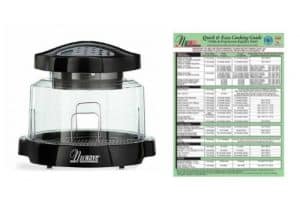

So how do you adapt a recipe written for a regular oven to work for a convection oven? Interestingly, European convection ovens use a third heating element located behind the fan.Ĭonvection ovens can be gas, or electric and are sold as an option in stoves, wall ovens, and countertop ovens. The fan circulation of hot air throughout the chamber helps to ensure fast and even cooking of the food.

VerbalĬonvection ovens (aka fan ovens) differ from conventional ovens: they have fans. Here is a table for approximate temperatures for these terms. Some recipes use "slow" or "hot" to describe oven temperatures.

Verbal to Fahrenheit, Celsius, and Gas Mark Gas Mark to Fahrenheit to Celsius Gas Mark Celsius to Fahrenheit to Gas Mark Celsiusįahrenheit to Celsius to Gas Mark Fahrenheit You can round the number to the nearest degree: this will have very little to no difference in the result of your recipe. Note: the conversions below aren't rounded up or down. They are created for temperatures of conventional ovens (aka traditional ovens). Here are cheat sheets to help convert your recipes into the temperature units of your preference. They come in different sizes with either gas or electric options.Ĭonventional electric ovens have electric heating elements on the top and bottom, while gas ovens rely on a gas flame. Oven temperature conversion chart printableĬonventional ovens have been the most popular oven type since the 1950s.Verbal to Fahrenheit, Celsius, and Gas Mark.Shelf Height / Position in the OvenĮven in my fan assisted oven, things cook quicker on the top shelf than they will on the bottom. The more space, the easier it is for the heat to penetrate and the quicker the cooking time. If you have equal amounts of say veggies for roasting and cram one sample into a small roasting dish but spread the other sample out on your largest rimmed baking sheet, there will be a significant difference in the time each takes to cook. This can result in you checking, opening, checking, opening and things ending up taking significantly longer than planned. Opening the oven.Įvery time you check and open the oven door, the temperature in the oven drops. Other factors to consider when adjusting cooking times for different temperatures. NOTE: There will be slight differences in your calculations for Celsius but the results won’t be significantly different. Common Examples of Different Temperatures – FahrenheitĤ50F instead of 400F = 0.89 = 27 minutes Common Examples of Different Temperatures – Celsius This isn’t an exact science, and you don’t want to burn dinner, so I check earlier just to be sure.įor our example if the new calculated time is 53 minutes, I’d check after 50 minutes. Multiply initial time by the % Differenceīack to our example, if something takes 60 minutes at 400F (200C),Ħ0 minutes x 0.89 = 53 minutes. Start Temperature / End Temp = % Difference.įor example going from 400F (200C) to 450F (230C) Work out the percentage difference in temperature.
#NUWAVE OVEN TEMPERATURE CONVERSION CHART HOW TO#
How to adjust cooking times for different temperatures. Works every time! Here’s how to adjust cooking times for different temperatures. When I’m short on time, one of my favourite techniques is to crank up my oven so everything cooks quicker.


 0 kommentar(er)
0 kommentar(er)
